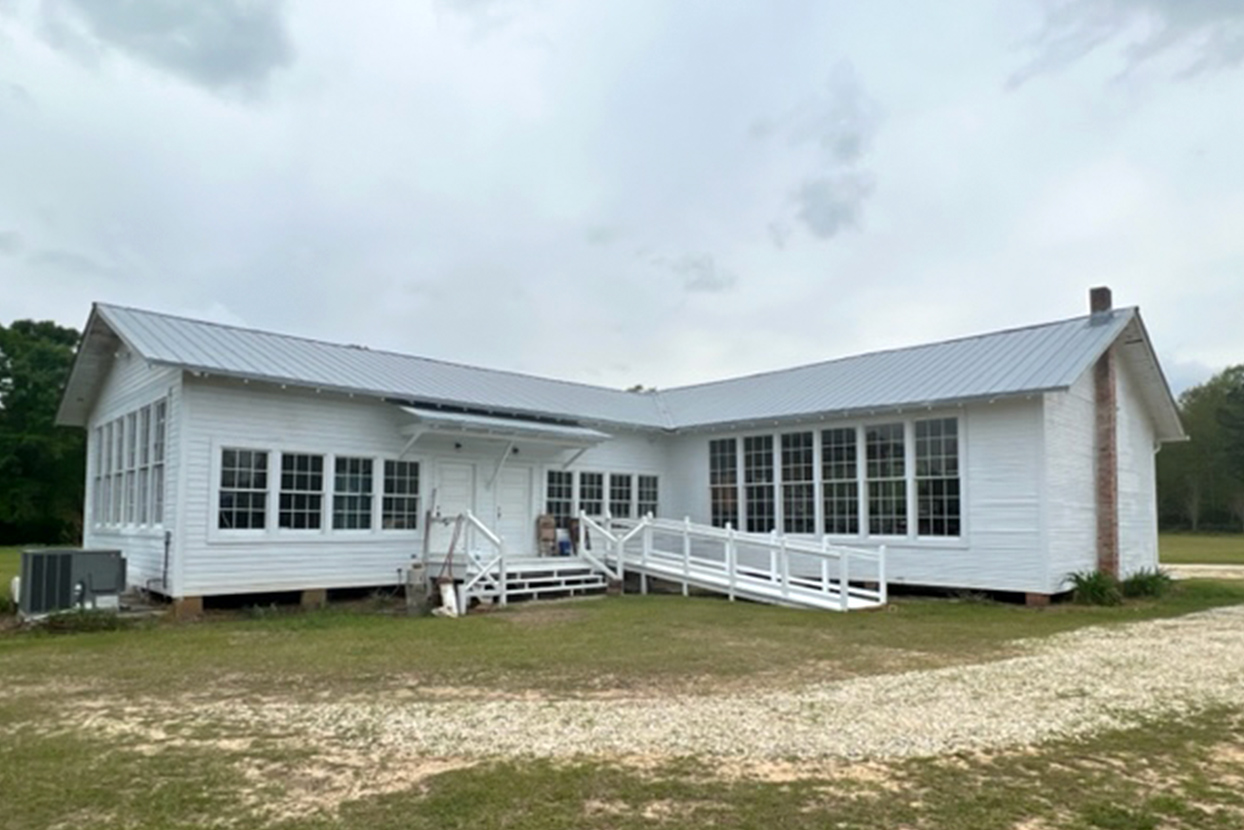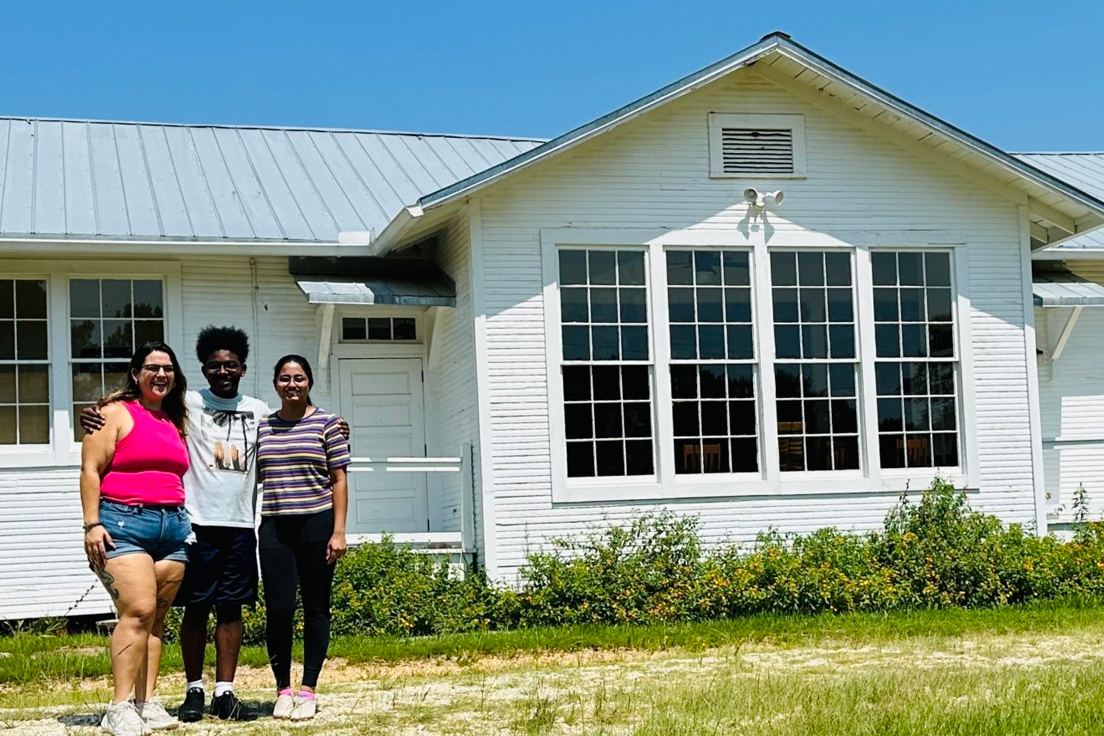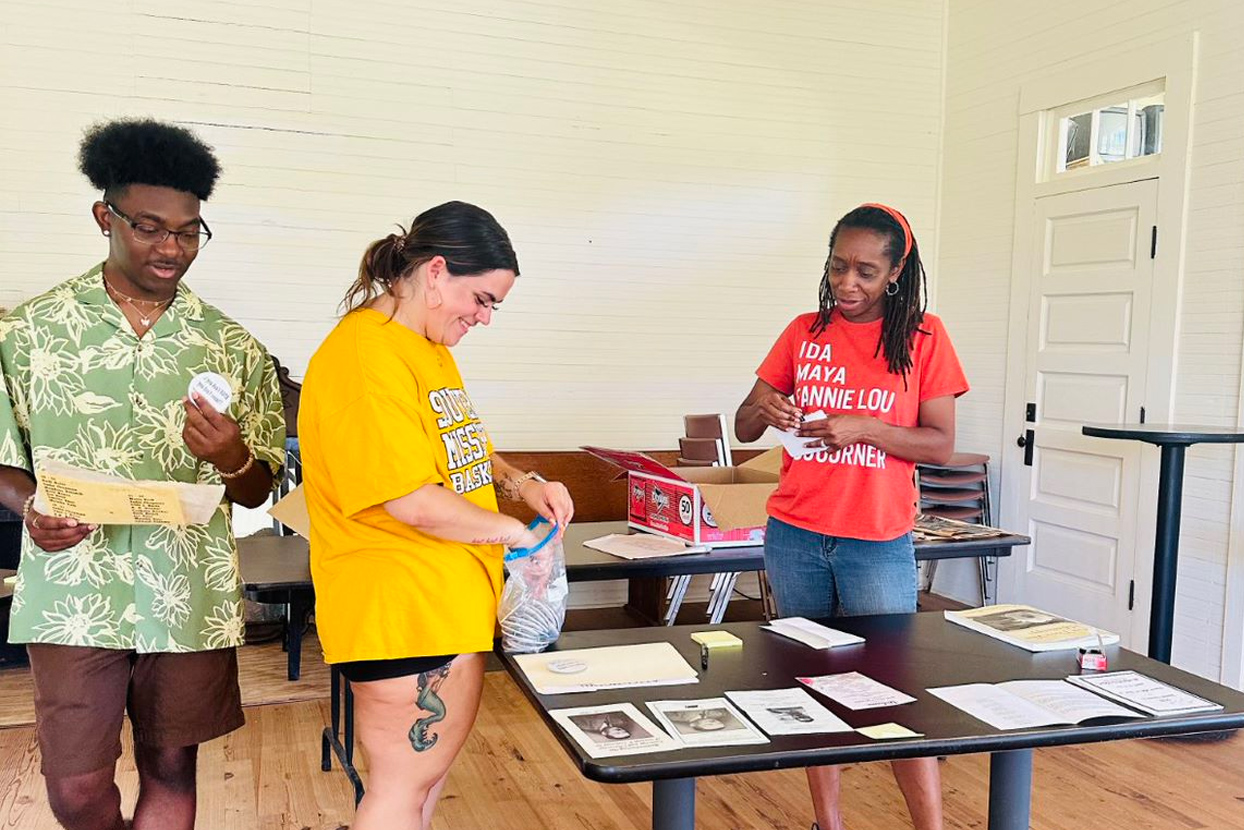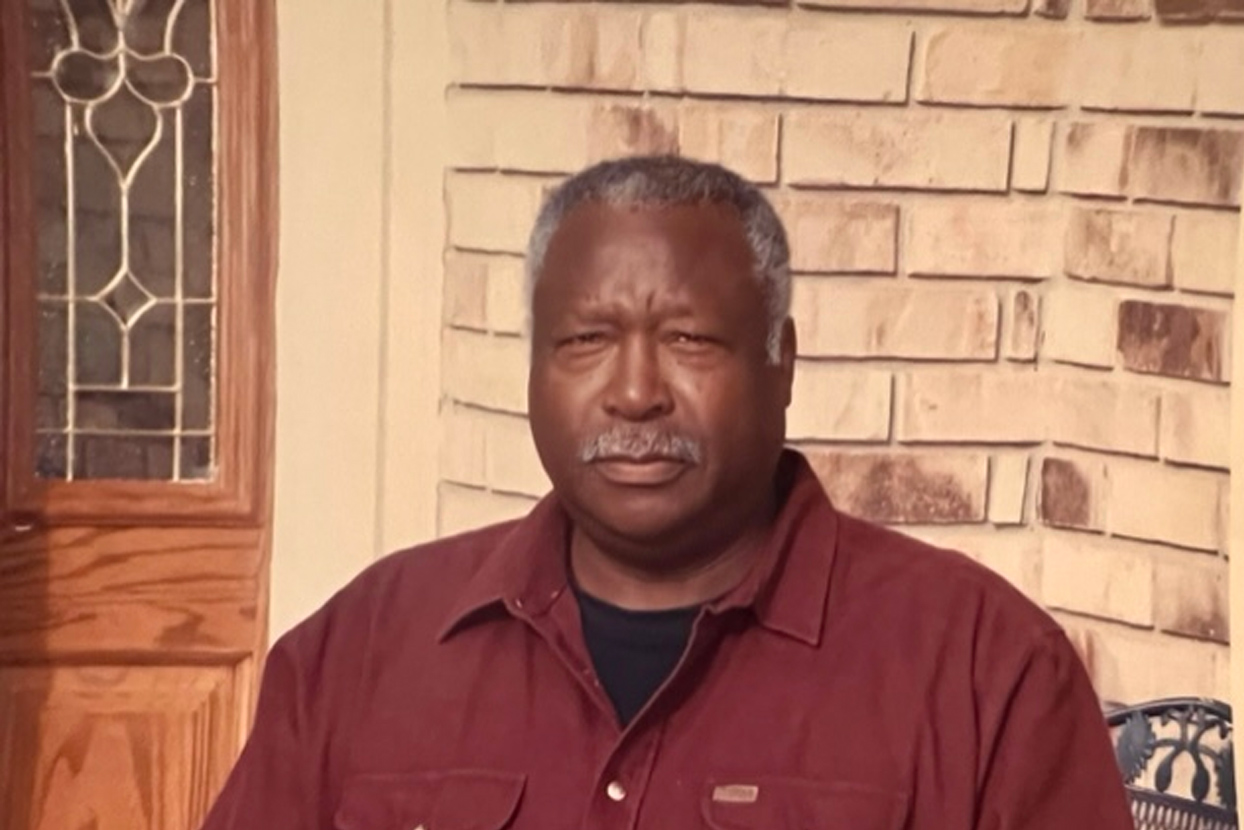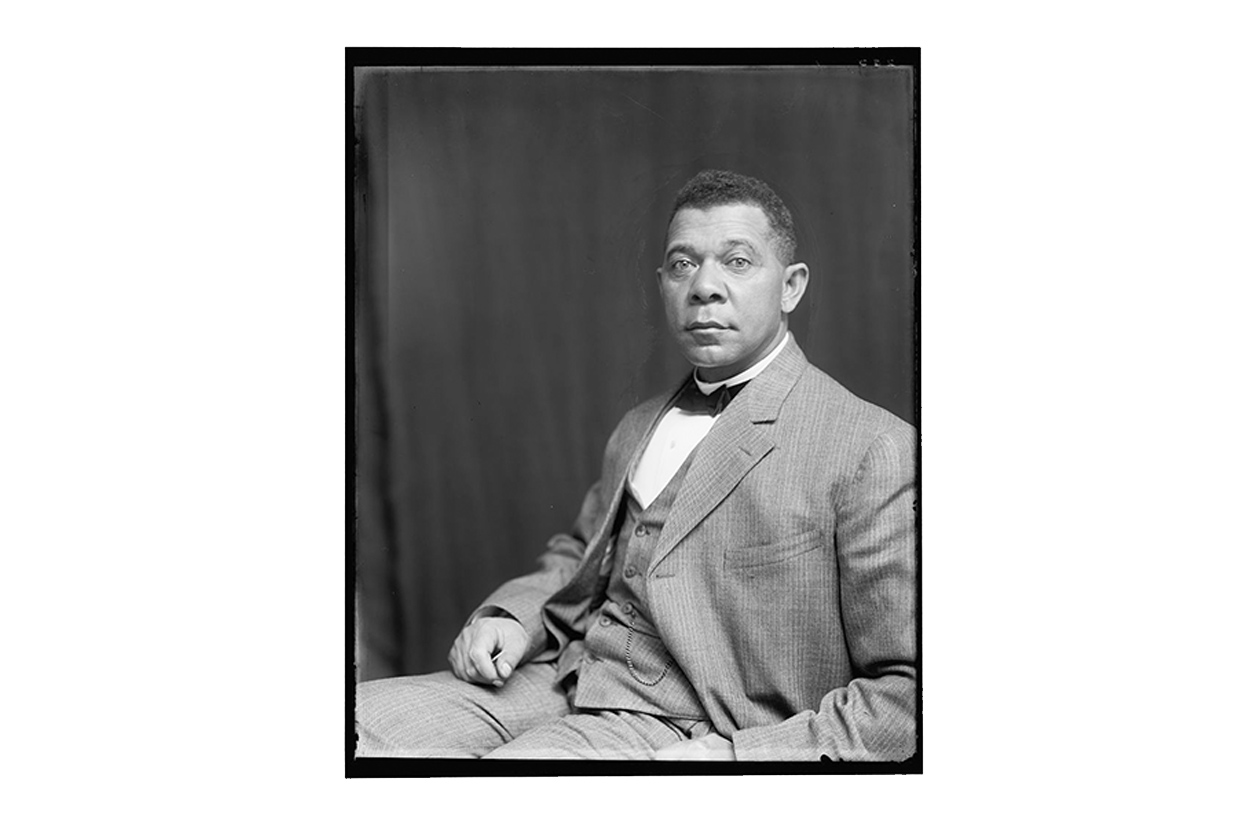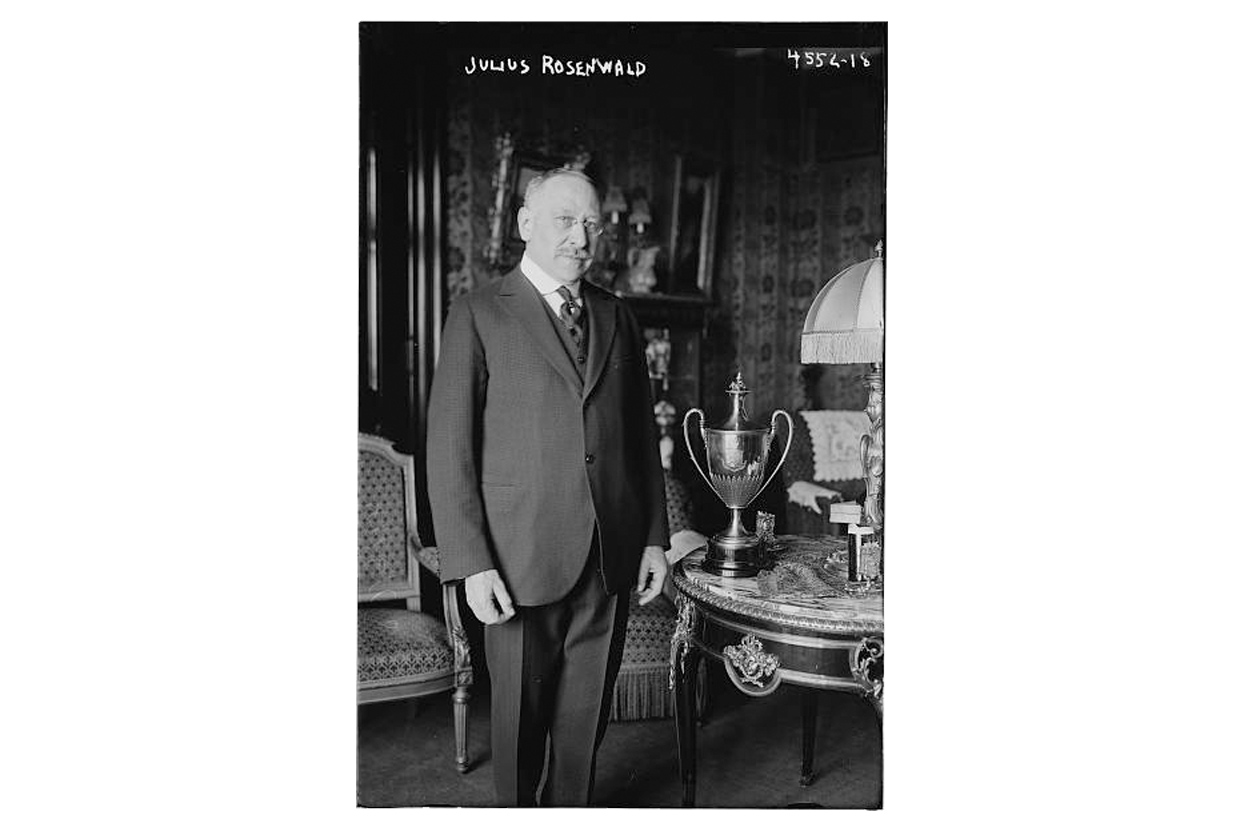Black Studies
Bay Springs School
Page Content
The Historic Bay Springs School: A Service-Learning Project
Project Director: Dr. Sherita L. Johnson, Associate Professor of English / Director, Center for Black Studies
Participants: Sruthi Shanmukhi Abrapudi (grad assistant), with students in BLKS 491—Damini Bedi and Jaylin Jones. BLKS 491 is the “Service-Learning in Black Studies” course requirement for all minors.
Term: Summer Session II, June 29-July 28, 2023
Project Goal: To collect information and archive some history about the Bay Springs school as a surviving Rosenwald school and important cultural heritage site in South Mississippi. Participants worked collaboratively to achieve the project’s goals:
- Catalog and store archival materials relating to the history of the Bay Springs School
- Conduct oral histories to contextualize archival materials and the cultural heritage site
- Collaborate with USM archivists for the permanent preservation of archival materials
History of the Bay Springs School
Built in 1925, the Bay Springs School building is one of the few remaining rural Rosenwald schools in Mississippi designed for the purpose of educating African Americans during segregation. Located in Forrest County, in an area known as the Kelly Settlement community, the original campus had several buildings: a two-story high school building, an auditorium, a cafeteria, a vocational agricultural shop, and the superintendent’s house. The Bay Springs School served the community until 1958, closing in the aftermath of Brown vs Board of Education when public schools were integrated. It remained a useful site however (once as a church) until succumbing to years of neglect and deterioration. The Bay Springs School building was renovated in 2012 with grant funding by the Mississippi Department of Archives and History.
Philanthropist Julius Rosenwald began a partnership with Booker T. Washington in 1912 to fund the building of public schools for African Americans throughout the South. Rosenwald was part-owner of the Sears, Roebuck, and Company, one of the most successful retail businesses in the U.S. especially by the early 20th century. Rosenwald officially launched an initiative in 1917 to fund the building of black schools after the initial trials in rural Alabama where Washington had several schools built to demonstrate the need for providing quality education for African Americans in the deep South. Rosenwald schools became a nucleus for black achievement within these communities. Mississippi had 637 Rosenwald-assisted buildings constructed, with only a few surviving structures well-preserved today.
